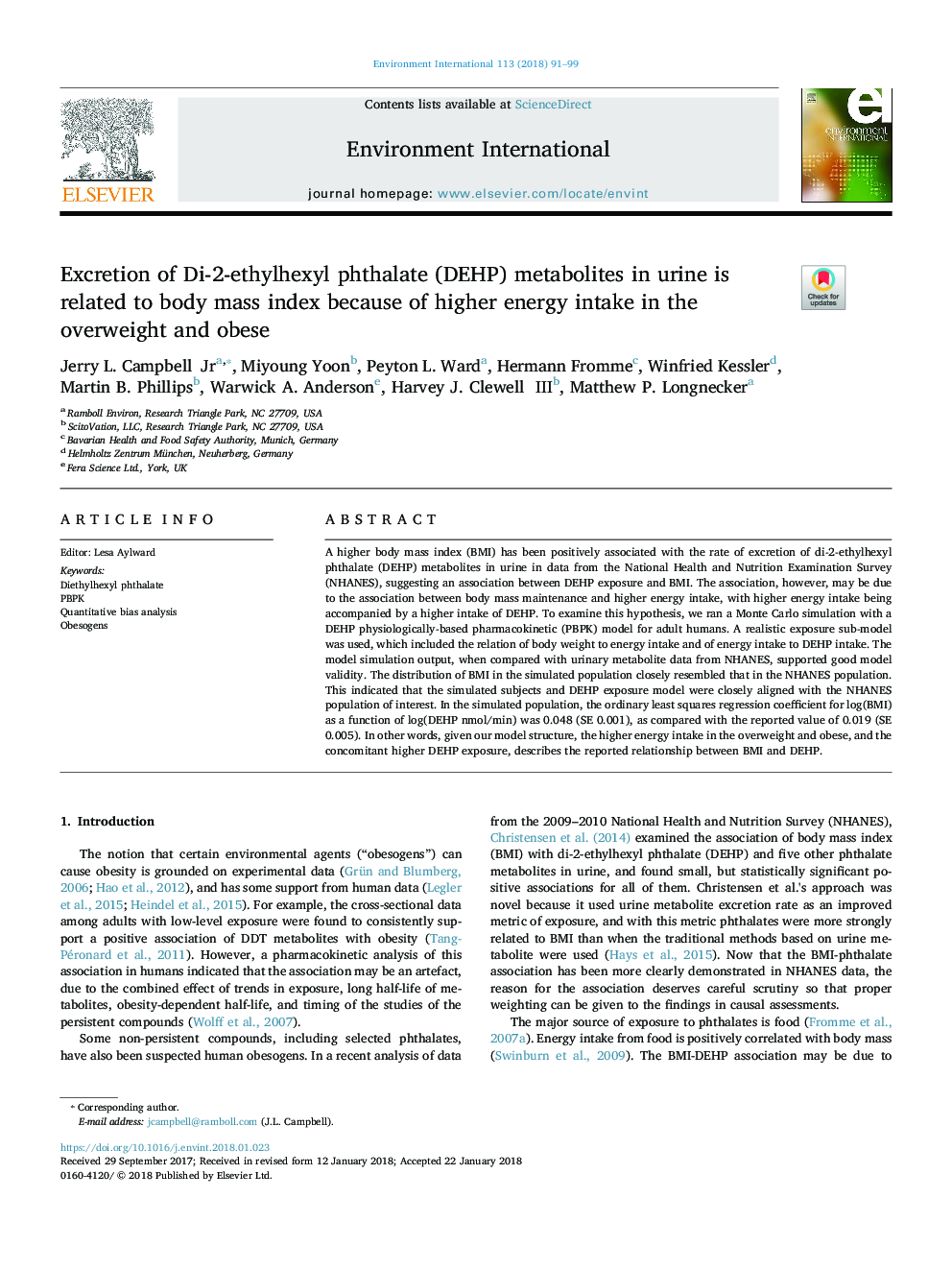| Article ID | Journal | Published Year | Pages | File Type |
|---|---|---|---|---|
| 8855339 | Environment International | 2018 | 9 Pages |
Abstract
A higher body mass index (BMI) has been positively associated with the rate of excretion of di-2-ethylhexyl phthalate (DEHP) metabolites in urine in data from the National Health and Nutrition Examination Survey (NHANES), suggesting an association between DEHP exposure and BMI. The association, however, may be due to the association between body mass maintenance and higher energy intake, with higher energy intake being accompanied by a higher intake of DEHP. To examine this hypothesis, we ran a Monte Carlo simulation with a DEHP physiologically-based pharmacokinetic (PBPK) model for adult humans. A realistic exposure sub-model was used, which included the relation of body weight to energy intake and of energy intake to DEHP intake. The model simulation output, when compared with urinary metabolite data from NHANES, supported good model validity. The distribution of BMI in the simulated population closely resembled that in the NHANES population. This indicated that the simulated subjects and DEHP exposure model were closely aligned with the NHANES population of interest. In the simulated population, the ordinary least squares regression coefficient for log(BMI) as a function of log(DEHP nmol/min) was 0.048 (SE 0.001), as compared with the reported value of 0.019 (SE 0.005). In other words, given our model structure, the higher energy intake in the overweight and obese, and the concomitant higher DEHP exposure, describes the reported relationship between BMI and DEHP.
Keywords
Related Topics
Life Sciences
Environmental Science
Environmental Chemistry
Authors
Jerry L. Jr, Miyoung Yoon, Peyton L. Ward, Hermann Fromme, Winfried Kessler, Martin B. Phillips, Warwick A. Anderson, Harvey J. III, Matthew P. Longnecker,
